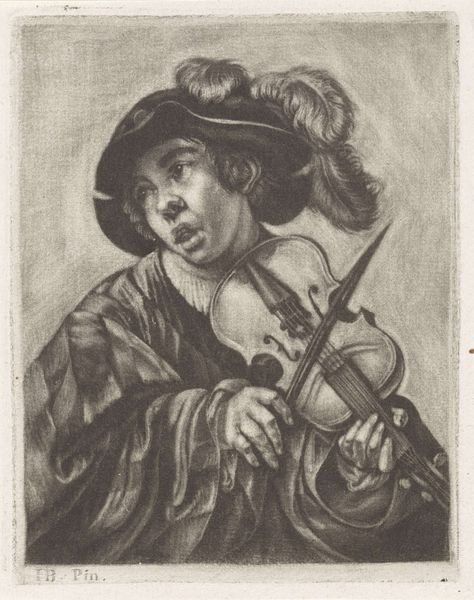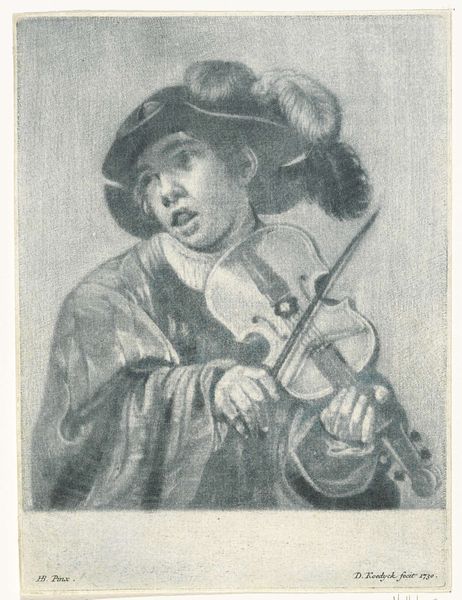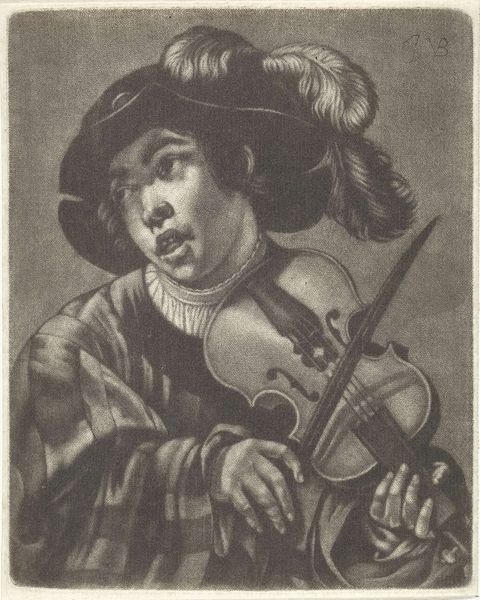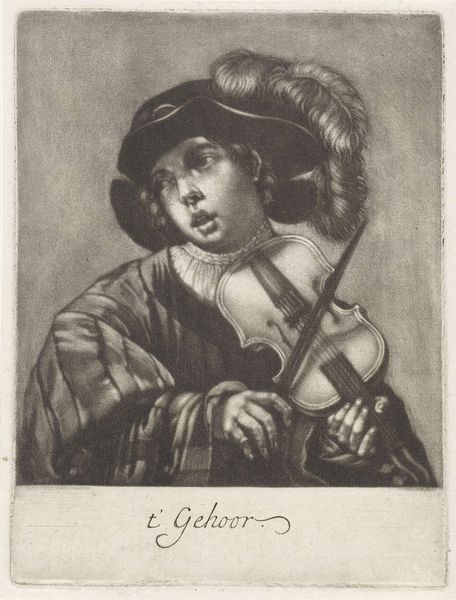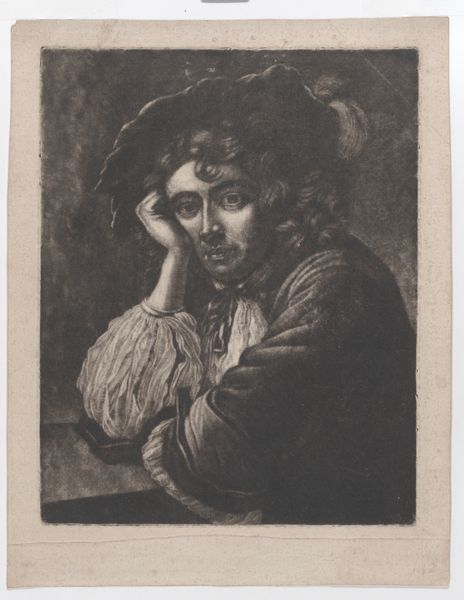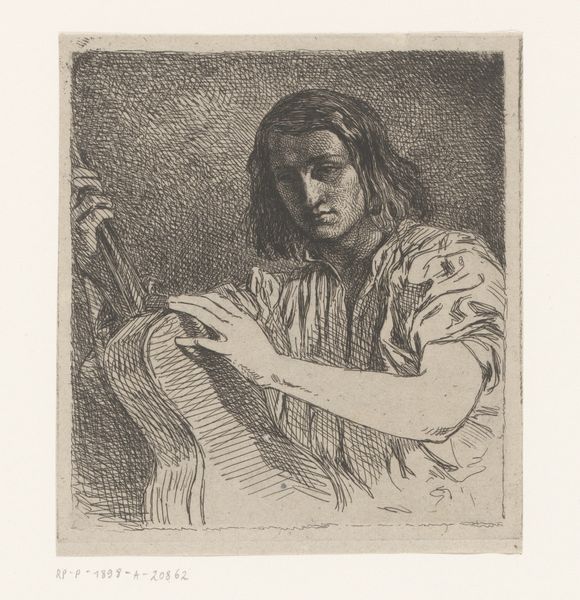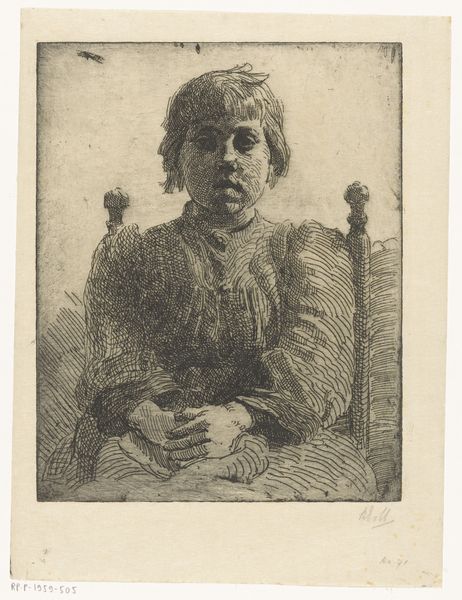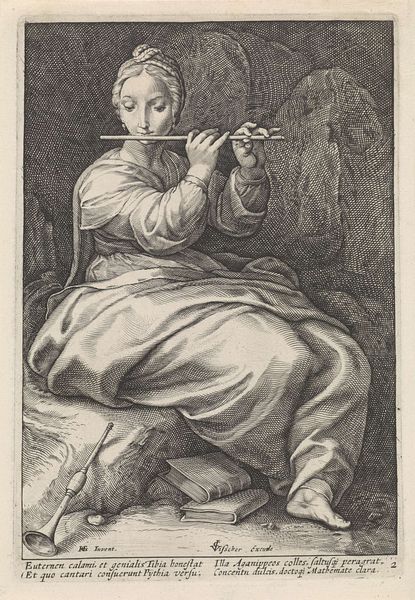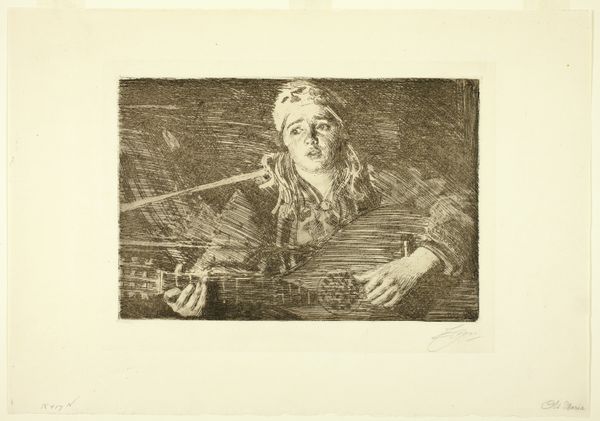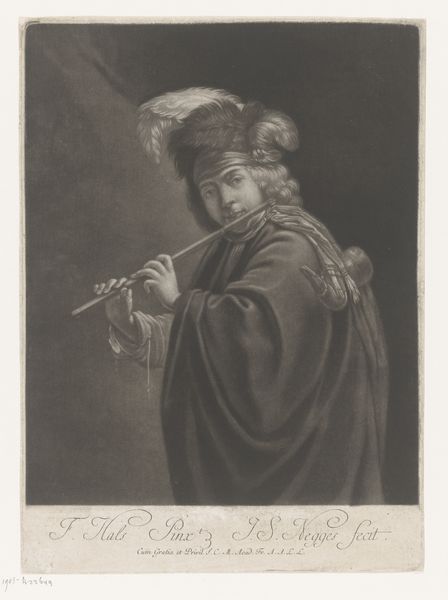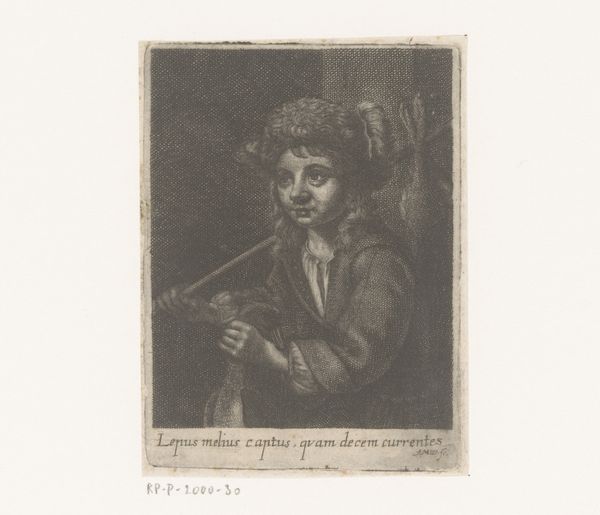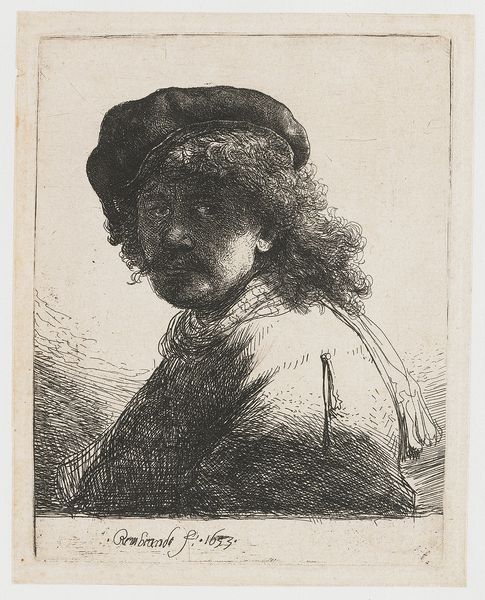
drawing, print, intaglio, pen
#
portrait
#
drawing
#
baroque
# print
#
intaglio
#
caricature
#
charcoal drawing
#
pen
#
portrait drawing
Dimensions: height 168 mm, width 125 mm
Copyright: Rijks Museum: Open Domain
Curator: Ah, here we have Dirk Koedijck's "Vioolspeler" from around 1730. A baroque print made using intaglio, pen, and charcoal techniques, all brought together in a drawing. Editor: What strikes me immediately is the light! There's a sort of earnest quality to his expression, the way his face is illuminated. A flash of passion. Curator: Absolutely, Koedijck captures a youthful exuberance. These images served multiple roles, functioning as accessible art, available beyond elite circles thanks to printmaking’s capabilities. Editor: It’s like catching him mid-song, totally absorbed. Makes me wonder, what tune is he so lost in? I feel myself wanting to create lyrics. What do you make of that slightly askew hat and those feathery plumes? Curator: It hints at performance, doesn't it? Maybe this character, our violin player, wasn't just about skill, but about presentation, a public persona enhanced by those Baroque flourishes. Also it looks like a Caricature. Editor: That's very true. This wasn’t simply music, it was theater. Did these early performances cater to particular societal strata or perhaps political leanings? It is curious how something can be utterly of it's time but also have such enduring appeal, you know? I keep thinking that young man is playing just for me. Curator: The artist may have aimed to critique social performances, as portraits can affirm status or satirize it. That slight caricature element suggests maybe we’re not meant to take him too seriously, a common satirical take, lampooning certain performances, certain behaviors of that time. Editor: So, looking at this image I'm struck, as I said, by his captivating aura and, further, this gives us space to consider who holds power, who doesn't, what that even *means* - both now and back then. Thanks. Curator: Precisely, and it reminds us that art isn't simply decorative, it's a lens through which we can better understand and yes, critique social and political history. Thank you!
Comments
No comments
Be the first to comment and join the conversation on the ultimate creative platform.
